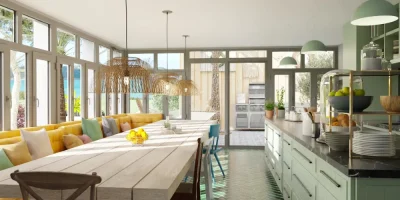Clients don’t just stumble upon great designers. They discover the ones who know how to market their talent.
Whether you’re building your business as a solo interior designer or managing a growing team, in this guide, you get proven, expert-backed strategies for how to attract your ideal clients, improve brand visibility, and ultimately close more projects.
You’re gonna want to bookmark this page since we include tips from expert marketers for everything from building a brand to monitoring KPIs.
Key Takeaways
- Build a marketing foundation that defines your niche, brand voice, and client profile.
- Leverage digital and in-person strategies to boost visibility and convert leads.
- Use data-driven KPIs and workflow tools to make smarter marketing decisions.
- Speed up your design-to-client pipeline with Cedreo’s 3D visualization and proposal tools.
Why trust us? Here at Cedreo, we’ve got 20+ years of experience working with interior designers and contractors. We know what it takes for pros like you to land more jobs!
See How You Can Create Complete Projects with Cedreo
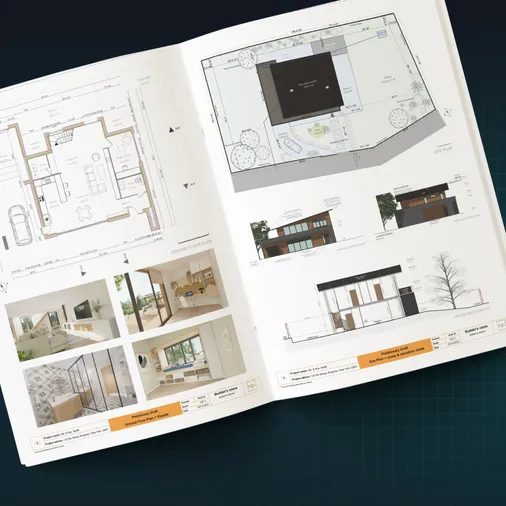
Plans – Get site plans, 2D floor plans, electrical plans, cross sections and elevation views — with all the technical details you need for a comprehensive project overview.
3D Visualizations – Use interior and exterior 3D renderings as well as 3D floor plans to help clients understand the finished project.
Documentation – Manage all your visual documents in one place, so it’s easier to present and sell your projects.
No credit card required, no commitment
Marketing for Interior Designers…The Basics (Niche, Brand Identity & Digital Foundations)
This is the groundwork for every other marketing strategy. If your interior design business isn’t clear on who you serve, how you’re different, and how you turn attention into inquiries, your marketing efforts won’t stick.
Define Your Niche, Positioning & Ideal Client Persona
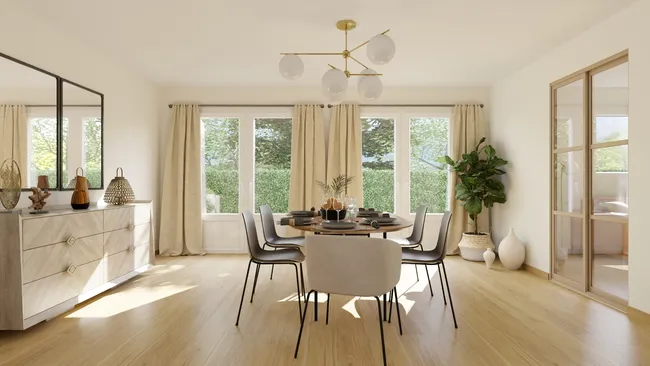
Get specific so your marketing strategies can speak directly to your target audience. If you don’t have it already, create a document that outlines the following…
- Service focus: Luxury residential, affordable family homes, or commercial interiors? Each attracts potential clients with different needs, budgets, and timelines.
- Style specialization: Which styles do you prefer to work with? Modern organic, coastal, maximalist, traditional…show design styles to attract clients who love your look.
- Price positioning: Align offers with value (consultations, room refreshes, full-service design, virtual consultations). State starting prices to pre-qualify a potential customer.
- Persona clarity: Document demographics, priorities, pain points, and decision triggers. Use their language in your marketing materials and on your professional website.
Clearly defining those 4 points, gives you the basis for creating what’s talked about in the next section…brand identity.
Brand Identity That Attracts Potential Clients
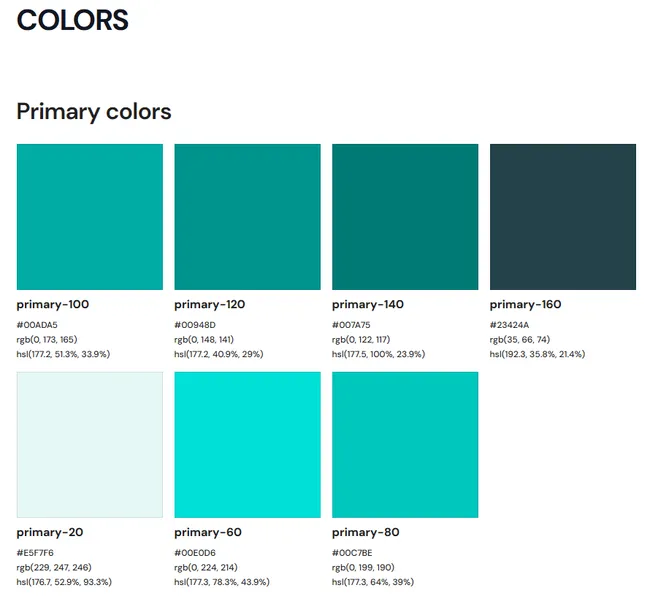
Your brand identity ties your design aesthetics to business perception. It should feel consistent across every touchpoint: website, proposals, social media profiles, and in-person, face-to-face interactions.
- Visual system: Logo, color palette, typography, and a style of photography that supports a highly visual industry.
- Portfolio proof: Curate design projects with high quality images, before and after photos, client testimonials, and detailed descriptions of the design process and design journey.
PRO TIP! Use the same image crops, tones, and captions across social media accounts to build recognition and trust in a competitive market. This also makes repurposing content easier (more on that later!)
Digital Foundations: Lead Capture, Search Engine Optimization & Conversion
Your website and profiles should work like a 24/7 studio assistant that attracts leads and converts them to consultations.
- Lead capture: Add prominent forms to collect email addresses with an incentive (style guide, budget checklist, project planning template). Integrate with email marketing automation to nurture new leads.
- SEO (Search Engine Optimization) basics: Target relevant keywords (service + city + style), write compelling titles, and use internal links. Publish quality content that answers questions your ideal clients actually search in search and IA engines.
- Conversion cues: On your website, offer clear packages, transparent timelines, a standout contact page, and prominent trust signals (press, awards, reviews). Ensure your site is mobile-friendly and fast.
- Show, don’t tell: Feature step‑by‑step case studies with high-impact visuals. Cedreo renderings make it easy to illustrate options and showcase before and after shots of what you would do with a space, even if it’s not a completed project yet.
- Add a project estimator tool: Offer a ballpark project estimator to attract leads and qualify budgets early.
- Interactive content: Quizzes (style finder), room planners, or virtual tours keep visitors engaged longer.
Google Business Profile & Local SEO

In the interior design industry, local discovery is gold. Optimize your Google Business Profile to surface in map packs and local searches across your immediate area.
- Make sure your profile is complete: Categories, services, service area, hours, and booking link. Keep NAP data (name, address, phone) consistent across directories and your site.
- Visuals that convert: Upload high quality images, before and after photos, and short videos of your latest projects.
- Reviews & Q&A: Encourage past clients to leave reviews and answer questions publicly to build trust with local businesses and homeowners. Even if you get a bad review, kindly reply and offer to help make it right. This builds trust.
- Posts & updates: Share design tips, new business announcements, and virtual consultation availability. Consistent posting is a signal of fresh content.
For local SEO you should also consider…
- Neighborhood targeting: Create city or neighborhood landing pages on your site to rank for hyperlocal searches and collaborate with local brands.
- Directories & citations: List your interior design firm on local directories to reinforce local SEO.
Content Marketing That Builds Authority
Content marketing is the consistent creation and distribution of useful, relevant content such as case studies, how‑to blogs, before‑and‑after breakdowns, video walkthroughs, etc.
The content attracts your target audience, answers their questions, and builds authority over time.
The most efficient way to do this is with the Content Waterfall: publish one anchor piece, then repurpose it across every channel (Reels, carousels, pins, LinkedIn posts, email newsletter) to reach a wider audience without starting from scratch.
Here’s how…
- Anchor content: Start by creating a piece of long-form content. This could be video or written. Examples: Case study, how-to blog article, or video walkthrough of a project (include scope, budget range, challenges, and results).
- Repurpose: Turn it into Instagram carousels, TikTok reels, Pinterest pins (create boards by room or style), LinkedIn articles, and an email marketing newsletter.
- Optimize: Add relevant keywords throughout the text. Make content comprehensive and truly beneficial. Quality>quantity. Add links to related pages on your site to keep visitors exploring more content.
- Evergreen + timely: Mix cornerstone design marketing guides with latest projects and design trends to keep a stream of fresh content.
PRO TIP! End every piece with a next step CTA (call to action)…download a checklist, book a discovery call, or submit their email.
All this content…it can be a bit overwhelming. You got into design to be a designer, not a content creator, right?
It’s understandable to feel a little overwhelmed at the thought of creating a bunch of content to market your services. Here are some tips to keep it manageable.
- Time‑block weekly: Reserve a 60–90‑minute content sprint to plan, batch‑create, and schedule across social media platforms.
- Capture ideas fast: Keep a simple notes doc to jot blog post ideas, bullet points, and relevant keywords.
- Record raw, edit later: Shoot quick on‑site videos and upload the raw footage for editing into multiple formats (Reels/TikTok/Stories; wide crops for Pinterest/LinkedIn).
- Automate distribution: Use scheduling and automation tools (see the tools section below) to cross‑post and repurpose quality content.
- Scale with help: When your marketing budget allows, hire a part‑time freelancer to turn assets into carousels, captions, and email marketing newsletters. You do the easiest part, create raw content or jot down ideas. Then the freelancer turns it into post-ready content.
Digital Ads Basics for the Interior Design Business

Getting started with paid ads doesn’t have to be complicated.
Think of digital advertising as a way to put your best work and services in front of people already searching or scrolling for interior design ideas in your area.
Where to start (simple plan):
- Google Ads (Search): Target service + city terms (e.g., “interior designer Austin”), set a small daily budget ($10–$25), and send clicks to a focused landing page* with a clear contact form.
- Meta Ads (Instagram/Facebook): Promote your top Reel or carousel to homeowners within a tight radius; use before‑and‑after visuals and a soft CTA (“Book a consult”).
- Pinterest Ads: Boost pins that already get saves; aim them at keywords and interests around rooms/styles to drive traffic to your portfolio or case study.
*Quick definition of a landing page: A single, focused web page built for one goal (like booking a consult), with a clear headline, concise benefits, proof (high‑quality images/testimonials), and a short form. Simple is often better since fewer distractions mean more ad clickers convert.
More about key parts of your ad campaigns:
- Targeting & creative: Keep audiences local. Test two headlines and two images/videos per ad set. Use high-quality images, short captions that speak directly to your target audience, and mention design styles you’re known for.
- Budget & pacing: Start small for two weeks, watch cost per lead, and shift spend to the platform generating the most qualified inquiries.
- Tracking: Install Google Analytics. There are plenty of tutorials on how to set up the basics.
Quick definitions:
- CPC = cost per click.
- Conversion = the action you want (form fill or consult booked).
- Retargeting = ads shown to people who already visited your site.
By getting these fundamentals like your branding, website, and local SEO in place, the rest of your marketing efforts will get much better results.
Keep going in the next section with interior designer marketing tips to build on your foundations.
Social Media Marketing Strategies for Interior Design Firms
As a designer, you’re in a highly visual market. A focused social media marketing plan helps you attract clients with visuals.
Instagram: Design Marketing That Converts Followers into Inquiries
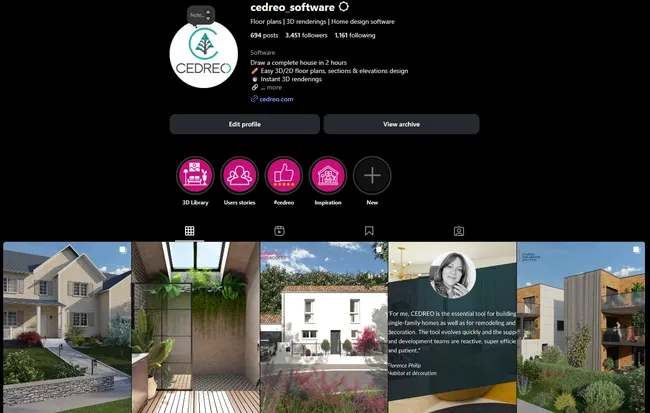
Best for: Aesthetic storytelling, before and after photos, Reels, and relationship‑building via DMs.
- Content that works: Reels (30–60s), carousel case studies with detailed descriptions, Stories with polls, and short client testimonials. Use high quality images and Cedreo renderings to visualize options before demo.
- Frequency: 3–4 feed posts/week, 2–3 Reels/week, Stories most days. Batch content weekly so your social media accounts stay consistent.
- SEO + discovery: Write keyword‑rich captions (service + city + style), tag location, and use relevant hashtags. Link your Google Business Profile and contact page in bio to turn interest into inquiries.
- Ads: Test geo‑targeted reach or lead ads in your immediate area to capture potential clients. Promote top Reels and carousels that already perform.
Pinterest: Evergreen Visibility & Website Traffic

Best for: Long‑tail search engine discovery and saving visually appealing ideas. Great for content marketing that compounds.
- Content that works: Fresh static pins, carousel pins, and Idea Pins that break down the design process step‑by‑step. Include before and after photos and link to long-form blog content.
- Frequency: 5–10 fresh pins/week; 1–2 Idea Pins/week. Create boards by room, style, and city to reach a wider audience and local searches.
- SEO + discovery: Use relevant keywords in titles, descriptions, and file names. Add detailed descriptions on pin pages.
- Ads: Try consideration or conversion campaigns to push high‑intent visitors to your professional website.
TikTok: Show the Design Process & Reveal Moments
Best for: Behind‑the‑scenes process, quick tips, and project reveals that attract leads.
- Content that works: 9:16 vertical videos (15–45s). Hooks like “From mood board to move‑in,” timelapse installs, budget breakdowns, and reveal reactions.
- Frequency: 3–5 posts/week. Keep a reusable list of prompts (paint picks, lighting swaps, space‑planning mistakes) to maintain fresh content.
- Ads: Spark Ads on top organic videos. Test local interest and homeowner lookalike audiences to reach potential customers.
Quick definition – “Hook”: The first 1–3 seconds of a video or top line of a post that stops the scroll. Lead with a problem, promise, or striking visual (e.g., “This $8K kitchen tweak changed everything”).
LinkedIn: B2B Networking & Thought Leadership
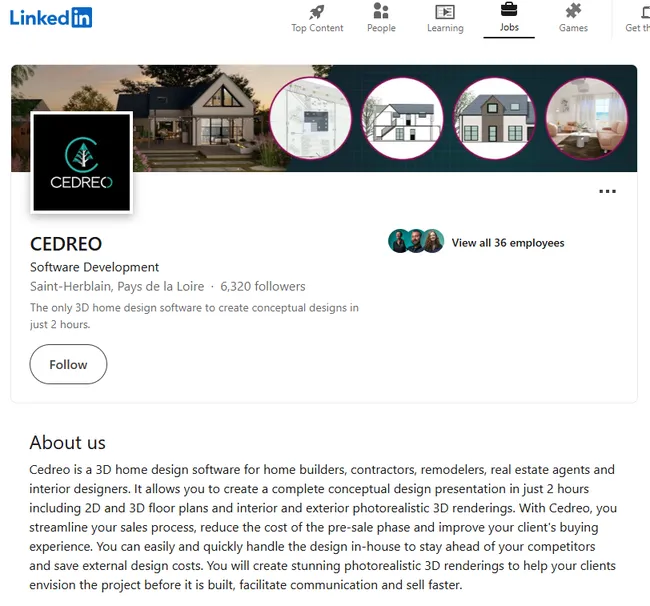
Best for: Partner introductions and credibility with builders, developers, realtors, and local brands.
- Content that works: Short insights with a single image (in‑progress shots, code or procurement lessons), carousel mini‑case studies, and monthly long‑form posts that position you as a thought leader.
- Frequency: 2–3 posts/week; 1 long‑form article/month. Engage partners’ posts and share client testimonials and award news.
- Ads: Consider lead-gen or event forms when you attend industry events or offer virtual consultations for new business.
Here’s a quick platform comparison.
| Platform | What it’s best for | Best content types | Recommended posting frequency | KPIs* to watch |
| Community + conversions, interior design marketing showcase | Reels, carousel case studies, stories polls, client testimonials | 3–4 feed posts/week, 2–3 reels/week, stories most days | Saves, profile clicks, website taps, inquiries | |
| Evergreen discovery via search engines | Fresh pins, Idea Pins, boards by style/city with detailed descriptions | 5–10 pins/week, 1–2 Idea Pins/week | Outbound clicks, saves, sessions, leads | |
| TikTok | Process + reveal moments to attract clients | Vertical videos: timelapse, tips, reveals | 3–5 posts/week | Views, avg. watch time, link clicks, inquiries |
| B2B partnerships with local businesses and interior design firm credibility | Single‑image tips, carousel mini‑cases, monthly long‑form | 2–3 posts/week, 1 article/month | Connections, profile views, referral leads |
*Quick definition ok KPI (Key Performance Indicator): A measurable metric (like lead conversion rate or cost per lead) that shows whether your marketing strategies are working.
Marketing Budgets for Interior Designers
Set a clear marketing budget so your interior design marketing stays consistent and measurable.
Use one of the simple methods below, then allocate funds based on goals, team size, and how quickly you want to grow your interior design business.
How to Set Your Marketing Budget
Percent of revenue: Allocate 5–10% of gross revenue for steady growth, 10–15% if you’re newer or pushing into a competitive market.
Fixed monthly plan: Choose a realistic monthly number (e.g., $500–$2,500 for solo designers; $3,000–$10,000 for small to mid-size firms) and commit for at least one quarter before judging results.
Goal-based top‑ups: Add temporary funds to promote launches, new services, or seasonal design marketing campaigns.
Important Term – Cost per lead (CPL): Total spend ÷ number of qualified inquiries. Track CPL by channel to see which marketing strategies deserve more budget.
Sample Budget Allocation for a Solo Interior Designer
Use this as a starting point, then adjust based on performance.
- Website, SEO & content marketing (25%) — Hosting, technical fixes, on‑page search engine optimization, and one monthly case study or blog that targets relevant keywords and attracts potential clients from search engines.
- Visual assets: photos + 3D designs (20%) — Photography and 3D images and renderings to showcase design projects and before and after photos. Cedreo helps you create best quality visuals without a big production budget.
- Social media ads (10%) — Small, geo‑targeted boosts on Instagram/TikTok to your immediate area to reach a wider audience and drive traffic.
- Email marketing & CRM (10%) — Tools to collect email addresses, send newsletters, and nurture past clients and new leads.
- Google Business Profile & directories (10%) — Enhanced listing, ongoing review generation, and local citations to build trust with local businesses.
- Networking & industry events (10%) — Coffee meetings, open houses, and attending industry events where word-of-mouth referrals start.
- Scheduling & design tools (5%) — Social scheduling apps and light automation.
- Contingency/testing (10%) — Try new formats (short‑form video, lead magnets) and shift budget to winners.
Sample Allocation for a Small to Mid-Size Interior Design Firm
Use this sample marketing budget as a starting point for a small to mid‑size interior design firm, prioritizing digital marketing, portfolio visuals, and systems that convert interest into signed projects.
- Website, SEO & content marketing (20%)
- Visual production: photos + 3D designs (20%)
- Paid social & search (20%)
- Email marketing, nurture, and lead management (10%)
- Freelance editing & content repurposing (10%)
- Google Business Profile + local brands & directories (5%)
- Networking, partnerships & industry events (10%)
- Tools/automation & analytics (5%)
Networking & Partnerships: Local Brands, Builders & Realtors
Relationships amplify your reach.
Strategic partnerships help you access more clients, get word-of-mouth referrals, and add authority to your design marketing without massive ad spend.
Who to Partner With
Real estate agents. Pre‑listing refreshes, staging, and quick consults help listings stand out and sell faster.
Contractors & home builders. Trades want speed and clarity. Provide a simple selection package with deadlines, a finish schedule, and one point of contact. Share a one‑page capability sheet so they know when to bring you in and what clients receive.
Architects & property managers. For architects, support early planning, like space plans, materials, and realistic budgets. For property managers, offer repeatable refresh programs with consistent pricing and timelines.
Showrooms & local brands. Co‑market with an after‑hours “Ask a Designer” or a seasonal vignette. They get foot traffic and content, you get exposure and leads.
Find more potential partners by showing up where they are.
- Attend industry events, association meetups, and grand openings.
- Keep a one‑page PDF or flyer with services, design styles, and visuals. Include your contact page QR code.
Co‑Marketing Ideas That Attract Clients
- Joint project spotlights on Instagram/Pinterest with links to each other’s Google Business Profile and professional website.
- Open‑house design clinics or “Ask a Designer” sessions at model homes or showrooms.
- Newsletter swaps & blog guest posts to reach a wider audience with valuable content.
- Pinterest boards you create together by style or neighborhood. Tag partners in captions with detailed descriptions and relevant keywords.
With the right partners and consistent follow‑through, networking turns into a dependable channel for new business without relying solely on ads.
Now that we’ve covered ways to market your services and attract clients, we’ll move to some marketing tips for making the most of your warm leads and existing clients, as well as some tools for streamlining your marketing pipeline.
The Client Journey for Interior Designers: From First Touch to Signed Client
A clear, repeatable client journey makes your interior design marketing measurable and your delivery consistent. Map the steps, set expectations, and communicate proactively.
This provides clarity for you and helps clients feel guided from first impression to signed contract.
Important Term “Sales funnel”: The path a prospect takes from awareness (they find you) to conversion (they hire you). Your job is to reduce friction at each stage.
Map the Journey
- Awareness: People discover you via search results, your Google Business Profile, social media platforms, referrals, and industry events. Lead with high quality images, before and after photos, and client testimonials that build trust.
- Consideration: Your professional website and portfolio offer detailed descriptions of services, design styles, process, and pricing cues. Add clear CTAs and a standout contact page.
- Consultation (in‑home or virtual consultations): Send a confirmation email with agenda and prep. Use a discovery script (scope, budget, timeline, decision‑makers) and summarize next steps.
- Proposal & agreement: Present packages with clear inclusions, timelines, and payment schedules. Use option tiers (Good/Better/Best) to attract leads at different price points and close more clients.
- Project kickoff: Welcome email, milestones, and communication cadence so clients know how you’ll collaborate.
The Art of the Upsell
A thoughtful upsell isn’t pushy, it’s helpful. Use timing, packaging, and simple automations to present relevant add‑ons that improve results and increase average project value.
Where Upsells Fit in the Design Journey
- After concept approval: Offer lighting upgrades, window treatments, or storage solutions that complement the design.
- During procurement: Suggest warranty/maintenance plans, rug and art curation, or styling days.
- At install and 30‑day follow‑up: Propose adjacent rooms, outdoor refreshes, or seasonal decor swaps.
Specific Prospecting to Existing Clients
Prospecting past clients is the fastest, warmest path to new business. Here’s a simple playbook any solo designer can run in under an hour each month, no complex funnels required.
1) Segment smart, not perfect. Open your CRM and filter for clients by project type (kitchen, bath, staging), location, budget range, or timeline. Add simple tags like “VIP,” “Holiday styling,” or “Needs window treatments” so you can group opportunities quickly.
2) Pick a natural trigger. Reach out when there’s a reason: a project anniversary, a nearby install you’re finishing, a seasonal change (holiday styling or patio refresh), or a new service or vendor discount you can pass along. Natural timing makes outreach feel helpful, not salesy.
3) Send one short message. Keep it friendly, specific, and easy to say yes to.
4) Track and follow up. Note replies, schedule a single follow‑up in 5–7 days, and log outcomes (call booked, not now, no reply). If there’s no response after two touches, pause and try a different trigger next season. This light process keeps your email marketing focused on clients most likely to say yes.
How to Maximize Marketing Efficiency With the Right Tools for Interior Designers
Your time is money. Build a lean “marketing ops” stack that automates routine work, keeps content flowing, and frees you to focus on design.
Your Digital Marketing Ops Stack (Recommended Tools)
| Tool | Category | What it does | How it helps your business | Price range |
| Cedreo | Visualization & portfolio | Photorealistic renderings, 2D/3D floor plans | Produces high quality images quickly, speeds approvals and builds a portfolio, even as a new designer. Create branded project presentations. | Varies by plan |
| CapCut | Video editing | Mobile/desktop editor, auto‑captions | Turns site walk‑throughs into engaging content for Reels/TikTok with minimal time. | Free–$20/mo |
| Descript | Video/audio editing | Transcription, screen capture, audiogram tools | Repurposes project videos into shorts, polishes voiceovers for reveal clips. | Free–$50/mo |
| Buffer | Social scheduling | Plan, schedule, analyze | Keeps social media accounts active on one calendar, auto-post content. | Free–$5/month/channel |
| Mailchimp | Email marketing | Newsletters, automations, forms | Helps you collect email addresses, nurture past clients, and drive new leads. | Free–$33+/mo |
| Go High Level | All‑in‑one CRM/marketing | CRM, email/SMS, landing pages, website, forms, pipelines, scheduling, automations, reviews | Replaces multiple tools with one platform. Unifies leads, campaigns, and follow‑ups. | ~$97–$497/mo |
| HubSpot CRM (Free) | Lead management/CRM | Contact tracking, pipeline, tasks | Centralizes inquiries so no potential client slips through the cracks. Measure conversion. | Free (CRM); add‑ons vary |
| Google Analytics 4 | Web analytics | Traffic, sources, conversions | Reveals which channels drive traffic and form fills on your professional website. | Free |
| Search Console | SEO diagnostics | Queries, indexing, pages | Shows search engine queries and pages to optimize for relevant keywords. | Free |
| Repurpose.io | Content repurposing | Auto crops and publishes clips | Converts one video into platform‑specific posts to reach a wider audience. | ~$35-$79/mo |
| ChatGPT | AI assistant | Brainstorming, outlines, captions | Speeds ideation. Drafts captions that speak directly to your target audience. | Free–$20+/mo |
How to Track What Matters with KPIs (Interior Design Marketing)
Measure what moves the business, then reallocate time and budget to the winners. If you’re new to analytics, think of KPIs as a small set of gauges on your dashboard. You only need a few to steer well.
Core KPIs (with simple formulas)
| KPI | Formula | Why it matters | Where to find it |
| Lead conversion rate | Signed clients ÷ consultations booked | Shows how well your sales process works | CRM or a simple spreadsheet of inquiries vs. signed agreements |
| Cost per lead (CPL) | Total channel spend ÷ qualified inquiries | Reveals which marketing strategies generate affordable leads | Ad manager + inquiry log |
| Average project value (APV) | Total project revenue ÷ number of projects | Higher APV often comes from better packaging and upsells | Invoices or accounting tool |
| Website conversion rate | Contact form submissions ÷ site sessions | Confirms whether your professional website turns visitors into consultations | Google Analytics |
| Social engagement rate | (Likes + comments + saves + shares) ÷ reach | Measures how compelling your posts are to your target audience | Platform analytics |
| SEO visibility | Clicks, impressions, and rankings for relevant keywords | Shows if search engine optimization is working | Search Console |
| Return on ad spend (ROAS) | Revenue attributed to ads ÷ ad spend | Shows whether your ads pay for themselves | Ad manager (conversion value) + your sales records |
Quick example: $300 spent on Instagram ads and generated 6 qualified leads.
CPL = $50.00 (300 ÷ 6). If 1 of those 6 consultations became a client, lead conversion = 16.7% (1 ÷ 6). With $4,000 in revenue from that client, ROAS = 13.3 (4,000 ÷ 300).
You are profitable as soon as the ROAS is higher than 1.
Once you know what you’re tracking, monitor and adjust accordingly.
Double down on channels that attract leads at or below your target CPL, and trim tactics that don’t convert.
For example, don’t spend 10 hours a week on TikTok if it never brings clients.
Shift that energy to networking, your Google Business Profile updates, or prospecting with past clients.
Digital Marketing for Interior Designers: Make it Easier With Cedreo
High‑performing firms keep marketing simple: clear positioning, consistent content, and visuals that sell the story.
With photorealistic renderings, 2D/3D floor plans, and branded presentations, Cedreo helps you produce best‑quality visual assets fast, win buy‑in sooner, and turn interest into booked projects.
Ready to move faster? Try Cedreo free and start creating high-quality visuals that attract clients.

How to Market Interior Design Services – FAQs
The most effective marketing for interior design firms pairs a conversion‑ready website with local SEO (Google Business Profile), consistent content and social proof to attract qualified leads. Then layer email marketing, partner referrals, and targeted ads to turn interest into booked consultations.
Instagram and Pinterest drive discovery in the interior design industry. TikTok is nice for showing your process and project reveal reactions. LinkedIn supports B2B partnerships and local brands.
A successful interior design business website should include a clear service overview, portfolio with high quality images, client testimonials, contact page, and fresh blog content with relevant keywords.
Optimize your Google Business Profile, partner with realtors/contractors, attend industry events, and encourage word of mouth referrals from past clients.
Yes. Regular newsletters and automations build trust, nurture leads, and bring new business from potential clients and referrals.



